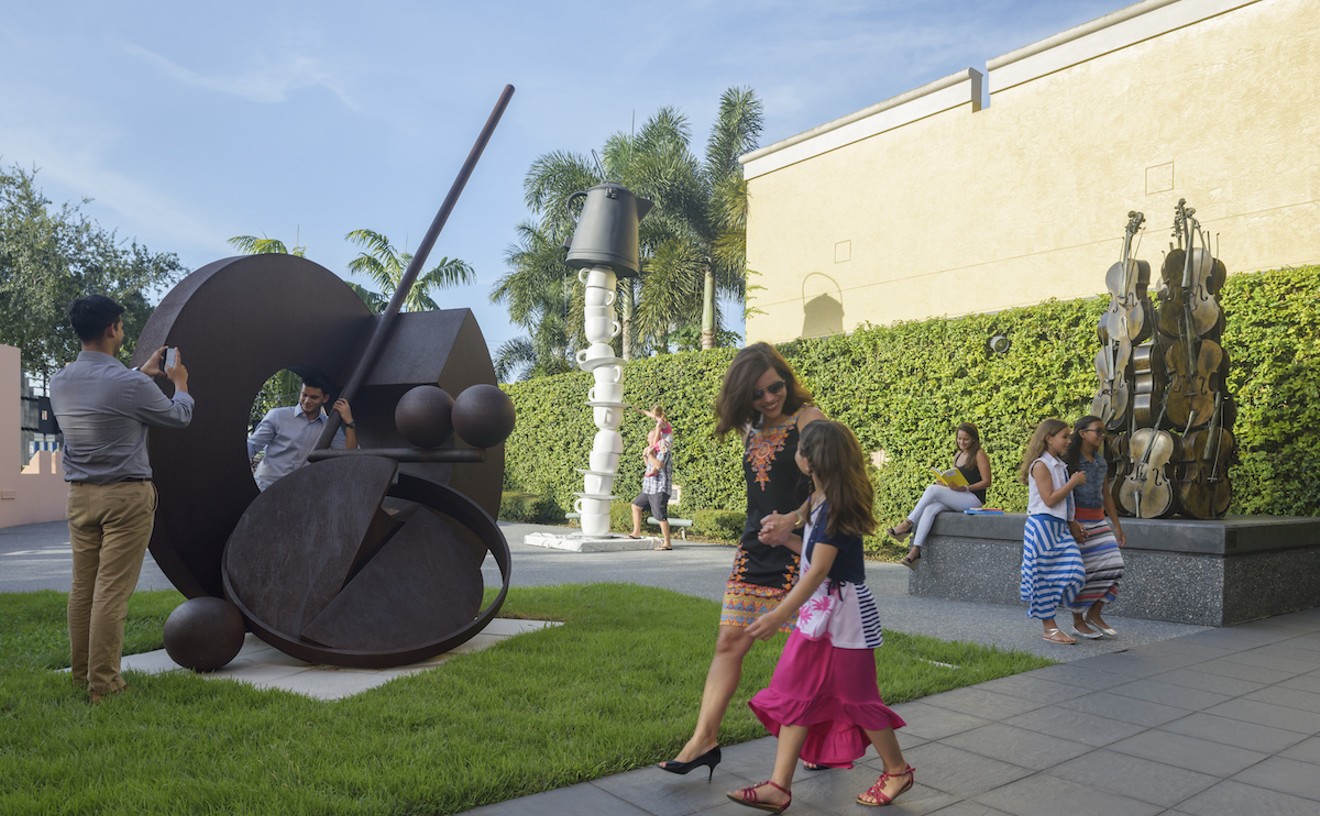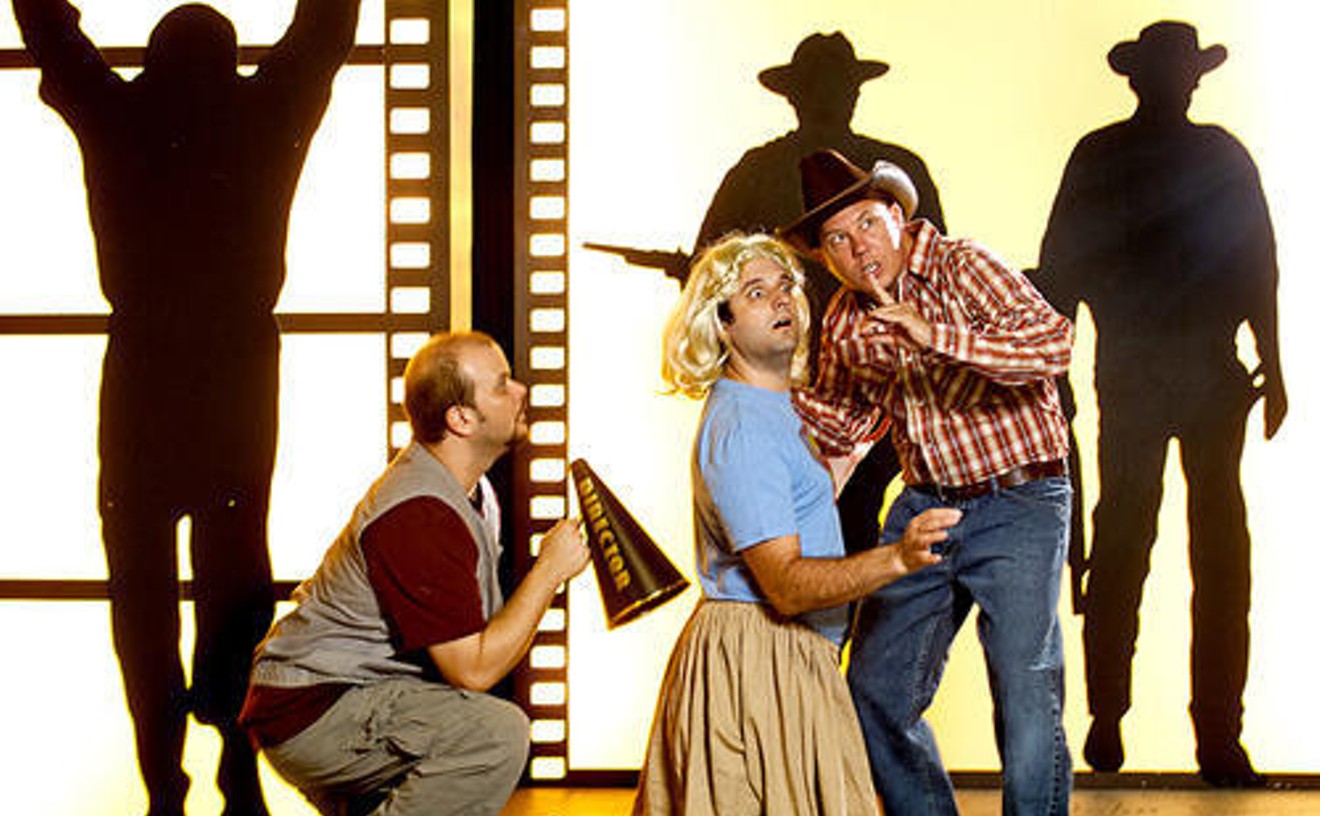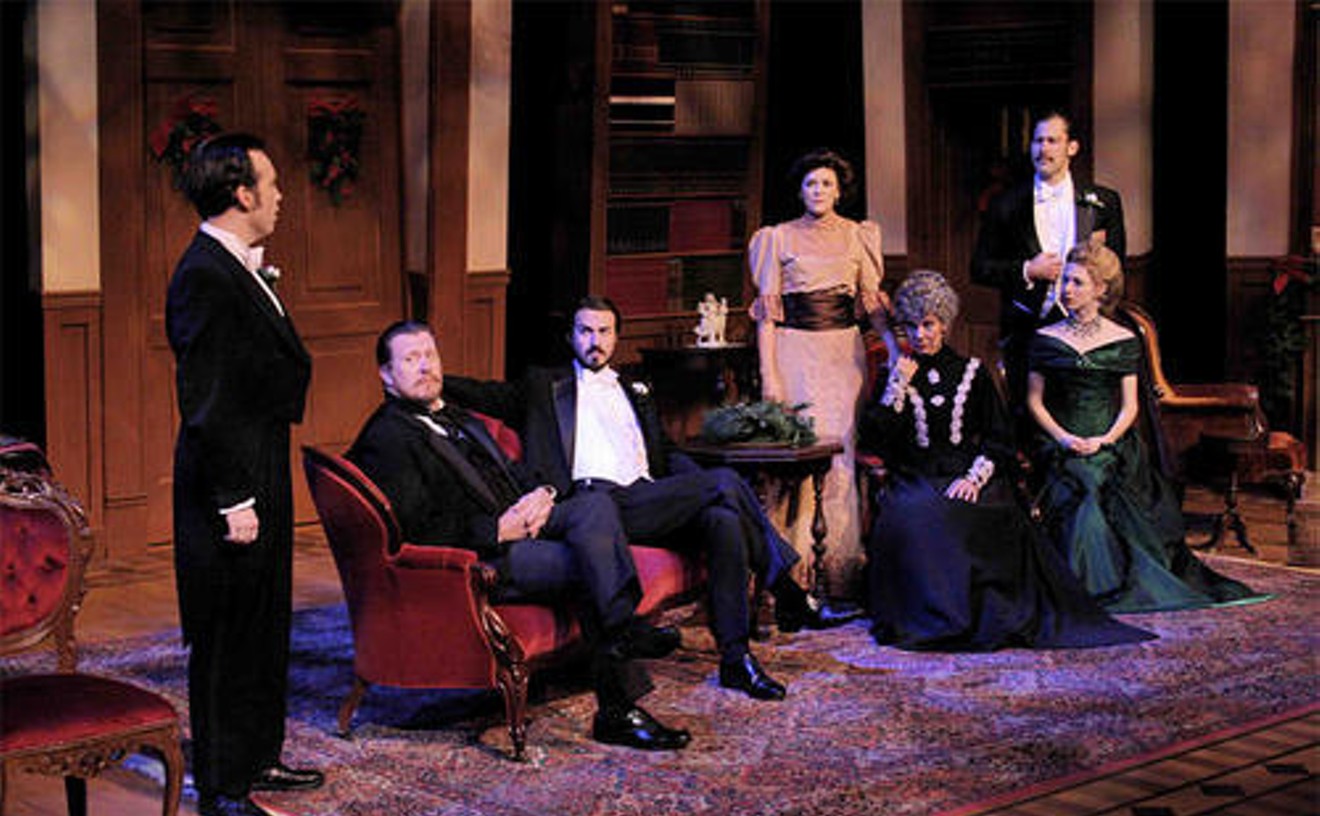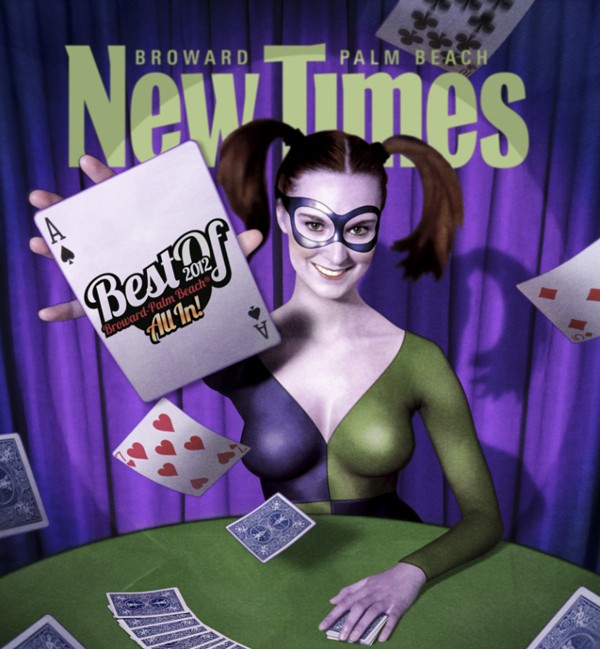What's the sexiest area of a woman's body? Her brain. So where does one find a sexy female brain in the land of beaches and liposuction? The Girls' Club Collection is an art space created, curated, and managed by women featuring art photography by female artists. The gallery itself was designed by a female architect, and it shows in the grace of the angles and fluidity of the movable walls. Films by female filmmakers are screened. Workshops are held by female artists. So if you're looking for a woman of substance, attend the next event at the Girls' Club. But please, while all those sexy female brains might drive you to it, no wolf whistling. Smart girls don't like that.
Best Place to Meet Intelligent Women
Girls' Club Collection
Best Painting Exhibition
"American Treasures: Masterworks From the Butler Institute of American Art"
Not to discount installation art or performance art or conceptual art or any other kind of art that has trended upward in recent years, but there are times when you just want to look at a bunch of paintings. For those times, there are shows like this one at the Boca Museum, made available to South Florida courtesy of Ohio's Butler Institute, which opened in 1919 as the country's first museum devoted exclusively to American art. The exhibition included only 36 works, but most of them were paintings that lived up to their billing as "masterworks." Where else, outside of a museum comparable to New York's Metropolitan, would you find a roll call that includes Edward Hopper, Robert Motherwell, Georgia O'Keeffe, Jackson Pollock, Andrew Wyeth, and Andy Warhol, to name but a few? Where else, indeed, would significant works by such major artists be overshadowed by paintings like Albert Bierstadt's The Oregon Trail and Thomas Cole's Italian Landscape, which almost stole the show?
Best Solo Exhibition
"Jenny Saville"

With canvases measuring up to 16 feet by eight feet, British artist Jenny Saville's eponymous retrospective at the Norton was literally the biggest show of the year. But what really makes Saville's art big, aside from its sheer scale, is its emotional content. Her images of haunted, fleshy, sometimes physically battered faces speak to a culture that gorges on itself even as it registers the traumas of the postmodern world. It's no surprise that her work fit in perfectly at the Royal Academy of the Arts' landmark, controversial, 1997 show, "Sensation: Young British Artists From the Saatchi Collection" — Saville's paintings are both sensational, as in creating a sensation, and all about sensation, as in dealing with the senses. The large-scale emotions also extend to her pencil-and-charcoal drawings, which took up two galleries in the Norton exhibition and focused mostly on her mesmerizing obsession with a famous Leonardo da Vinci cartoon of the Virgin Mary, the baby Jesus, Saint Anne, and John the Baptist. Saville is only 42, so presumably there's much more to come.
- 1451 S. Olive Ave., West Palm Beach, 33401 Map
- 561-832-5196
- www.norton.org
Best Group Exhibition
"All Florida Juried Competition and Exhibition"

Sometimes the best shows sneak up on you, registering only faintly while you're still in the museum or gallery and then later coming together in your head as a cohesive whole. The Boca Museum's 60th-annual "All Florida" was such a show. First there's the scale of the exhibition to consider: 101 artists represented, out of the nearly 600 who submitted close to 2,000 works. That juror Valerie Ann Leeds — a veteran of the Orlando, Tampa, and Whitney museums — managed to make sense of it at all is no small wonder. Leeds, however, not only culled judiciously; she also found a common thread running through so much diverse work, in the form of what might be called "the Florida experience," or, as she memorably put it, "a collective response to the environment and the bounty of natural resources found within Florida's borders." By taking the "All Florida" designation seriously, she assembled a show that somehow encompassed the Sunshine State's past, present, and future.
- 501 Plaza Real, Boca Raton, 33432 Map
- 561-392-2500
- www.bocamuseum.org
Best Photography Exhibition
"Artist Unknown/The Free World"

In 1955, photographer and curator Edward Steichen organized more than 500 images into "The Family of Man," which traveled to 37 countries and reached about 10 million people. In 2008, New York-based teacher and photographer Oliver Wasow and South Carolina painter John D. Monteith began assembling a collection of "found" or vernacular photography that now includes roughly 20,000 pictures. The sampling of their vast archive that was on display at Hollywood's Art and Culture Center represents a world in which an estimated 750 million people upload and share something like 100 million photos on their Facebook pages daily. What a difference half a century or so makes. The point of Wasow and Monteith's enterprise is that we are bombarded by so much imagery on a continuing basis that it's almost impossible to keep track of it, much less make sense of it. And yet they take on the daunting challenge of doing so, combing the internet for photographs — portraiture, mostly — that, taken together, form their own variation on "The Family of Man," one that speaks volumes about life in that long-ago time, the 20th Century.
- 1650 Harrison St., Hollywood, 33020 Map
- 954-921-3274
- www.artandculturecenter.org
Best Actress
Deborah L. Sherman

When casting like this falls into your lap, it's a gift. Deborah L. Sherman has said she has a history of mental illness in her family, including bipolar disorder, which undoubtedly helped her absorb the dangerous mood swings of Melinda, the bipolar wife of a pandering politician in Side Effects. Whether she was slinking about their immaculate living room with misplaced carnality, making surreptitious phone calls to a former lover, or using black humor as a defense mechanism, Sherman's Melinda was a fragile creature, uncomfortable in her own skin, her own home, her own marriage. The actress remained always a paragon of subtlety, never overplaying her character's emotional extremities. When she exuded, finally, a sense of self-actualized confidence after the disintegration of the marriage, it's like we were watching another person altogether — not exactly cured but visibly healthier. Sherman portrayed both Melindas with unflinching accuracy.
- 12200 W. Broward Blvd., Plantation, 33325 Map
- 954-577-8243
- www.mosaictheatre.com
Best Actor
Todd Allen Durkin

Six Years was one of the more underrated productions of the past year, especially for the colossal performance of Todd Allen Durkin. He essentially carried the entire play on his shoulders, discovering a complete spectrum of human emotion in an otherwise imperfect postwar panorama. Many months later, it's difficult to recall the goings-on in Six Years, which followed the tumultuous marriage of two people, in six-year increments, from the end of World War II to Vietnam. But Durkin's individual actions remain vivid, lodged in permanent residency in memory: his shell-shocked eyes staring with zombified vacancy at the motel interior in front of him; his jolting eruptions of anger over such inconsequential subjects as neckties and the volume of music; his shattering, tear-stained breakdown on a business trip. This was Durkin's debut performance at the Caldwell; here's hoping there are many more to come.
- 7901 N. Federal Highway, Boca Raton, 33487 Map
- 561-241-7432
- www.caldwelltheatre.com
Best Supporting Actor
Alex Alvarez

Alvarez is onstage only for a few minutes in each of the two scenes in The Unseen, but he dominates — nay, towers over — both of them like a mad, yet-to-be-deposed dictator. As a secret prison's brutal guard with a heart of... something, he hulks back and forth between two crude cells, and you can't take your eyes off him: a blocky refrigerator of intimidation, shaking the rafters with brutal curses that sound as if it's the first time we've ever heard these words. In Alvarez's grungy toolbox, they have a gripping power that puts most of David Mamet's artful profaners to shame. When he speaks, we all listen, even if we don't want to, as with his squeamish description of the murder of an inmate by removing his eyes and tongue, single-handedly. He still manages to make us laugh, uttering some of the funniest exclamations in this dark comedy; but if you saw this, chances are you slept with one eye open that night.
- 3301 College Ave., Davie, 33314 Map
- 954-262-5730
Best Supporting Actress
Laura Turnbull

Laura Turnbull's Marie Lombardi was a grounding force, the ego that kept a raging id in check. She was wife to Ray Abruzzo's larger-than-life title character in Mosaic's winning drama. And while Abruzzo's performance was all jazz, flash, and volume, Turnbull had an arguably greater challenge: to remain compelling while keeping everything low key. In a convincing wig and period clothes, Turnbull completed her transformation into the self-sacrificing Marie Lombardi with the utmost authenticity, transcending a role that could have been swallowed up if performed by a lesser talent. She expressed pain, anger, melancholy acceptance, wry humor, and even control over her relationship with Vince. She operated mostly under the surface, conveying her truest emotions through her movements and expressions as much as her words. And it's worth mentioning that she maintained her character's particular accent from beginning to end, which can't be said for a handful of our great actors.
- 12200 W. Broward Blvd., Plantation, 33325 Map
- 954-577-8243
- www.mosaictheatre.com
Best Ensemble Cast
All My Sons
Palm Beach Dramaworks' first production in the Don and Ann Brown Theatre proved to be an embarrassment of riches — an opening salvo that turned a corner in the company's history. No more was Dramaworks limited to cramped sets with small casts. To wit, this ambitious 1947 drama by Arthur Miller featured an ensemble of 11 actors from South Florida and beyond. Kenneth Tigar and Elizabeth Dimon did the heaviest lifting as the leaders of an emotionally shattered family, with Jim Ballard pouring out his soul as its only living son. The remaining members of the cast — neighbors and relatives of the central three characters — did their best to ensure that each of their personalities shone through, no matter how small their roles. With today's justifiable concerns over budgets and funding, no modern playwright would even script parts for half of the cast of All My Sons, which lives out of abundance.
- 201 Clematis St., West Palm Beach, 33401 Map
- 561-514-4042
- www.palmbeachdramaworks.org






